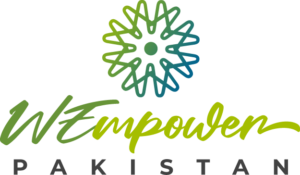
Analyzing the Gender Disparity in STEM Careers in Pakistan - A Statistical Overview
by
Rida Maheen
According to the Inter-American Development Bank, skill gap is a crucial constraint to innovation, hampering growth in productivity and economic development. In particular, shortages in the supply of trained professionals in science, technology, engineering, and mathematics (STEM)-related disciplines can weaken a society’s innovation potential. Over the years, a large gender disparity has existed at all levels of STEM disciplines around the world.
According to UIS data, less than 30% of the world’s researchers are women . The untapped potential of professionally educated and trained women elicits a significant missed opportunity not only for women themselves but also for society as a whole.
While the importance of the issue at hand in developed countries is increasingly understood, Pakistan still faces a lack of awareness that holds back researchers to deepen their understanding of this topic and policy makers to design impactful strategies. Women account for about 48.5 % of Pakistan’s total population and are an underused talent, despite being almost half of the population.
According to the UNESCO UIS database, female researchers as a percentage of total researchers for different regions shows that the participation of female researchers in Pakistan is 38.8%, which is higher than some developed countries like Sweden (33.7&), Finland (32.5%), Germany (28.0%), France(27.0%) [2].
The participation of female researchers in Pakistan is 38.8%, which is higher than some developed countries like Sweden (33.7%), Finland (32.5%), Germany (28.0%), France(27.0%)
The participation of women in national workforces is shaped by national cultures and policies, to which sectoral cultures and practices also play an important role; which are mostly the lack of comprehensive policies for safer workplaces, disregard for inclusion, disdain for equality, and the discomfiture of being the only woman in any given organization. It is an economic necessity to make full use of their talents at all levels of scientific and technical education, training and jobs, in order to achieve national growth. In Pakistan, the low socio-economic status of women is beginning to be recognized as a potentially significant drag on the growth of the country and still ranks second to last on the global gender gap ranking, therefore it will take more disruption to uproot the gender status-quo.
A number of obstacles have been identified that influence women’s higher education choices in Pakistan: personal interests, stereotypes, lack of role models and cultural expectations. Encouraged by the high level of higher education in Pakistan, more women attend private universities, and more follow typically male-dominated career paths, including engineering and science. For educational institutions, women account for 47% of the student body among bachelor’s students, 36% for doctoral students and 34% for researchers nationally [3].
A number of obstacles have been identified that influence women’s higher education choices in Pakistan: personal interests, stereotypes, lack of role models and cultural expectations.
While hurdles like gender-biased training, recruitment and appraisal procedures, stringent regulations and requirements, network exclusion, male-dominated culture and work-family conflicts have a substantial direct negative impact on different facets of women’s career growth, it is no doubt that we have also seen an increasing number of women in the STEM field. According to UNESCO Institute for Statistics, 2019, 45% of female researchers belong to medical sciences, 40% belong to natural sciences, 21% belong to engineering and technology, 36% belong to social sciences, 46% belong to humanities, and 12% belong to the agricultural sciences in Pakistan [3].
The Pakistan Council for Science & Technology (PCST) has taken the lead in promoting women in the scientific community and raising female scientists’ visibility by maintaining a website and initiating a project to collect data on statistics on women’s participation in science and technology [4]. With joint efforts and policies to bridge the gender gap in educational trajectories and STEM labor force participation, women in Pakistan can shatter the proverbial glass ceiling.
In conclusion the future for Pakistani women in STEM is hopeful. When it comes to numbers, the percentage of women in STEM careers is comparable to developed nations. Although more focus needs to be on the professional development of women such as training, recruitment and provision of a safe working environment.
Talking about women’s professional development, have you joined our network of women scientists? Membership is absolutely free and you get to be a part of a highly supportive network.
References
References:
[1] “Women in Science and Technology: What Does the Literature Say? | Publications.” https://publications.iadb.org/publications/english/document/Women-in-Science-and-Technology-What-Does-the-Literature-Say.pdf (accessed Jan. 26, 2021).
[2] “Women in Science.” http://uis.unesco.org/sites/default/files/documents/fs55-women-in-science-2019-en.pdf (accessed Jan. 27, 2021).
[3] “National Dialogue on Women in Science – Pakistan.” https://en.unesco.org/events/national-dialogue-women-science-pakistan (accessed Jan. 26, 2021).
[4] “Pakistan Council for Science & Technology.” http://www.pcst.org.pk/wst/ (accessed Jan. 26, 2021).
This article was written by Rida Maheen, a marketing intern at WEmpower Pakistan and Masters student at Tsinghua University, Beijing, China.


Recent Comments